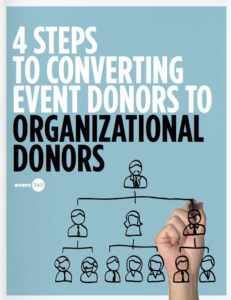When you tell your story, or the story of your organization, your believers see themselves as part of it. Honor that because you might just be someone’s story of hope.
Here’s what I mean.
In July 2000, my mum was bald. She had just gone through chemo for non-Hodgkin lymphoma. She now has all her hair and is happy and healthy–thank goodness!
At the time, however, we didn’t know if the chemo would be successful. I was training for a marathon with the Leukemia and Lymphoma Society’s Team-in-Training. I needed a little hope to keep me going.
And so, when we found ourselves a few kilometres away from the Tour de France that summer, we trekked to see it. I didn’t know the first thing about cycling. That didn’t matter. I wasn’t going to see the peloton. I was going to see what cancer could look like on the other side of chemo. I was going to see hope on a bike. I was going to see Lance Armstrong.
Ever since that fated day, I have been one of Lance’s biggest fans. He is wowerful to watch on a bike and he has created an awareness about cancer that is rivaled only by Komen. His name has become synonymous with cancer, hope and living strong.
Lance’s story of hope became my story of hope. It was a story about being able to not just survive cancer, but to thrive in its wake. It was a story about coming back from cancer and conquering mountains–both literally and figuratively–on sheer will, hard work and determination.
Then came last night’s 60 Minutes with its allegations and testimonials about doping. This is not the first time Lance has been accused of doping. Not by a long shot. (Skewering Lance has practically become a national sport in France.) The allegations have always been part of the story. As a believer, however, I simply convinced myself that the allegations couldn’t possible be true. There was no room for doping in a story whose power was predicated on its epic nature.
Now it seems undeniable that the story of Lance includes doping, drugs and EPO. It may still be a story of hope, but it is no longer my story of hope.
How Lance handles these latest accusations will determine his legacy because they will be some of the most critical chapters in his story. Lance is a masterful marketer. Can he be an honest storyteller?
With the Greg Mortenson scandal in full swing, Lance would not be alone in the “fallen philanthropic hero” category. What will that do for the cancer community? If he hadn’t done the drugs, would he have won anyway? If he hadn’t won, would he have been able to raise as much awareness and money for the cause? Impossible to know.
What I know is that I probably need to start looking for another story of hope. If you have one, please let me know. You’ll make my day… and probably the day of a lot of folks whose story of hope was the story of Lance.
 There’s no doubt that cat videos are all the rage online. There’s even an
There’s no doubt that cat videos are all the rage online. There’s even an 



